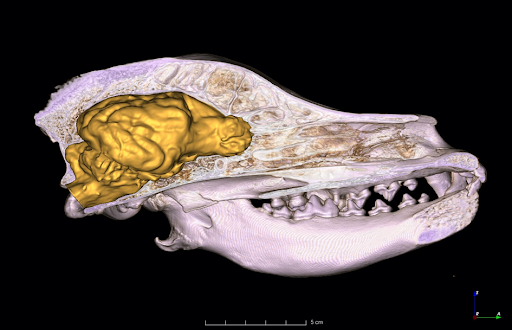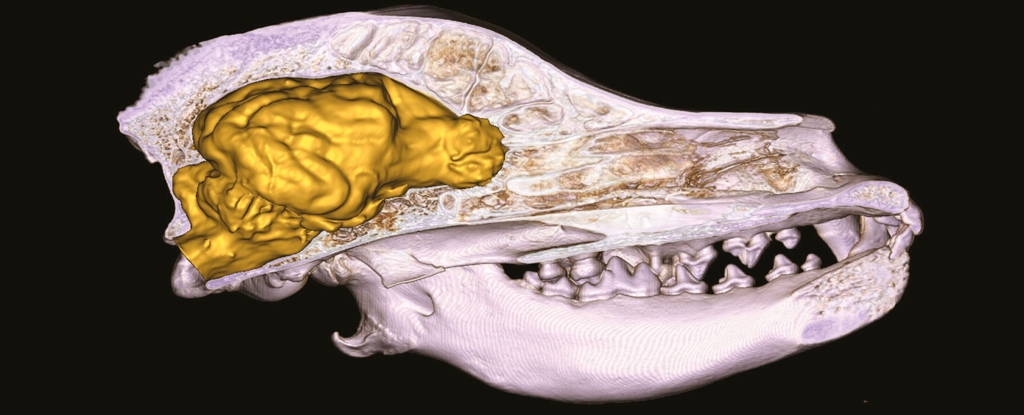Products You May Like
Dog brains are much smaller than wolf brains, but new research suggests modern breeding efforts have somewhat increased their relative size.
Compared to ancient dogs, modern breeds that developed in the past 150 years possess larger skulls compared to their body size. Yet scientists still don’t know why.
Numerous studies have shown that domesticating wild animals – like dogs, fish, pigs, cattle, sheep, rabbits, and cats – dramatically shrinks their relative brain size.
Scientists think this is a response to a reduced need for brain power when it comes to survival.
But researchers discovered something unexpected when comparing the skulls of 159 dog breeds, including some wolves.
While the size of a wolf’s brain is 24 percent larger than that of a similarly sized dog, the more that a dog breed differed from a wolf, genetically speaking, the larger their brain.
The findings suggest that while dog domestication thousands of years ago might have initially shrunk parts of the dog brain – like those related to mate choice, predators, or hunting – modern breeding has triggered some modest cognitive growth in the past century and a half.
But how?
“Different dog breeds live in varying levels of social complexity and perform complex tasks, which likely require a larger brain capacity,” says evolutionary biologist Niclas Kolm from Stockholm University in Sweden.

So Kolm and his colleagues hypothesized that some dogs, bred by humans for more complex tasks like herding or sports, would have larger relative brains.
That was not the case. Instead, the only factor that seemed to impact the relative brain size of modern dog breeds was how different their genes were compared to wolves – not the function of the breed, its litter size, or its life expectancy.
In fact, researchers could not find any difference in relative brain size in the breeds laid out by the American Kennel Club.
Past studies found that individual dogs’ absolute brain size plays a role in their memory and self-control, but this doesn’t seem to be a strong enough force to influence their overall breed’s relative brain size.
The findings are supported by other recent research, which also suggests the behavior certain dogs are bred for is not evident in their genetic makeup.
“Perhaps the more complex social environment, urbanization, and adaptation to more rules and expectations have caused this change, affecting all modern breeds,” speculates ethologist Enikő Kubinyi from Eötvös Loránd University in Hungary.
This falls in line with the social brain hypothesis – the idea that large brains can evolve to suit more complex social environments.
Previous research, for example, has found that dogs more closely related to wolves are worse at communicating with humans.
To learn more about how ancient and modern dog brains differ from wolves, the team suggests future research should compare the size of different brain regions.
Perhaps then scientists can figure out what impact we’ve had on dog brains and behavior.
The study was published in Evolution.
